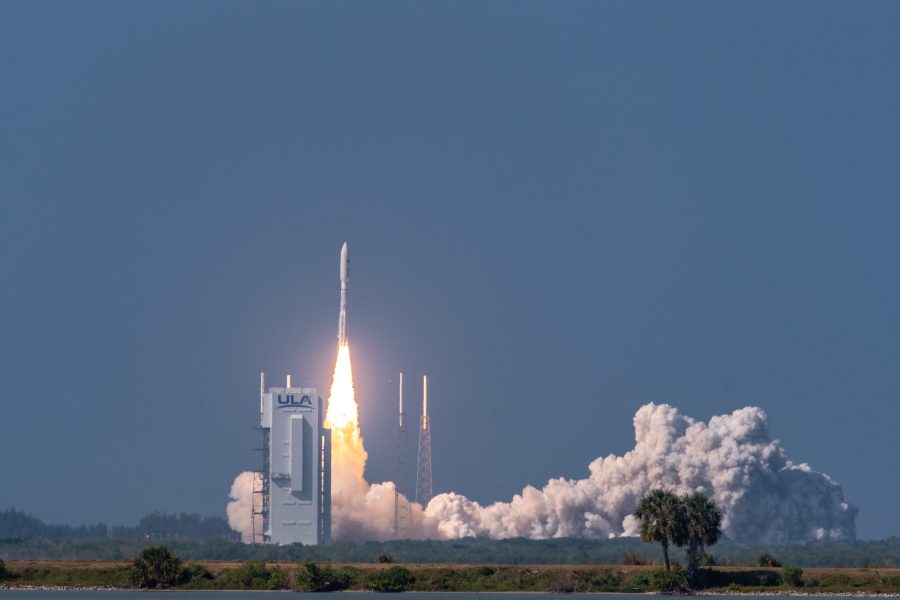A new report by RAND Corp. researchers argues the National Security Space enterprise would benefit from having three launch providers offering heavy lift services over the next few years, before downsizing to two to meet the Space Force’s long-term needs.
RAND believes that as the United States makes up a smaller share of the global heavy lift market, commercial companies will turn to other countries with new rockets better suited to heavy launch. American launch providers would then need to turn to the Space Force’s National Security Space Launch program for work.
Service officials have said they don’t expect they will need enough missions to warrant hiring three companies, though some on Capitol Hill have challenged that idea.
“The commercial addressable market share held by U.S. firms is expected to drop as Arianespace and Russia field new launch vehicles,” according to the April 28 report commissioned by the Air Force. “Simulations suggest that the market share held by U.S. firms might drop to as few as four to seven launches a year as early as 2025, making it likely that NSS launches will be the dominant source of demand for U.S. heavy lift launch over the next decade.”
Air Force acquisition boss Will Roper told reporters April 29 he’s glad RAND agrees with the service’s strategy for the NSSL Phase 2 competition, which will award contracts to two contractors this year to loft military and intelligence payloads into space through the mid-2020s.
“It’s also good to know that they found that whoever is awarded a Phase 2 contract is going to need access to legacy launch systems to avoid near-term gaps,” Roper said. “We want to create a launch industrial base that’s right for the nation.”
That approach is intended to help bridge the gap between the rockets and engines that are ready now, and those that will eventually replace United Launch Alliance rockets that use the Russian-made RD-180 engine. ULA, Northrop Grumman, Blue Origin, and SpaceX are vying for two contracts to provide those replacement rockets, which are slated for award by the end of June.
NSSL encompasses nearly 70 launches over the next several years, split between the Space Force and other players like the National Reconnaissance Office and Missile Defense Agency.
Roper agreed with RAND’s finding that three launch service providers should make up the short-term heavy lift launch market. Doing so could “increase the probability of global supplier consolidation but decrease the probability of additional foreign competition,” the report said. That strategy also gives American firms time to establish a strong position in the launch market and for weaker players to shake out.
RAND projects that the commercial heavy lift market will see moderate growth over the next decade, and other countries will begin to make up more of that market. Launches worldwide grew from 47 in 1992 to 71 in 2018, RAND said, but commercial launches are still hovering around 20 per year. The number of launches that companies can compete to provide is not skyrocketing, leading RAND to conclude that the commercial heavy lift market is unlikely to support more than one U.S. supplier.
Researchers also found that the Air Force’s current plan is unlikely to provide a large enough supply of rockets in the near term that are certified for NSSL missions. It can fix that by using options in an earlier NSSL contract or by adding contingency clauses to the Phase 2 contract that could allow for three providers through 2025.
“Tailored support can be provided in many ways and this is not necessarily a recommendation to select three launch service providers for the NSS Phase 2 contract,” the report said. “In fact, depending on a firm’s strategic choices, selection as a NSS provider might adversely affect a firm’s ability to compete in the heavy lift launch market.”
If money were no object, Roper added, the Air Force would capitalize on having more launch providers in the short term and start research and development for the third phase of NSSL.
“We funded what is required to get our job done,” he said. “The potential to … have a third provider would be great if we had funding for it, but it’s not necessary to meet the mission. … That sounds like a very good thing to discuss as a whole of government.”
